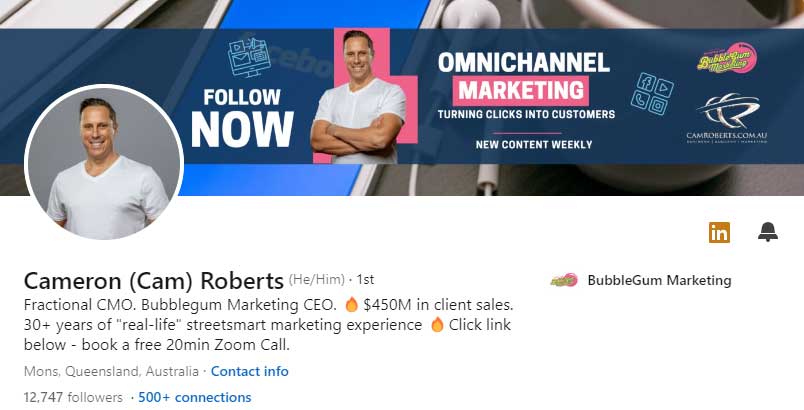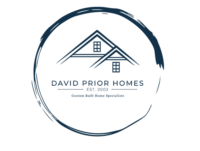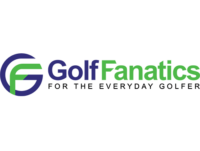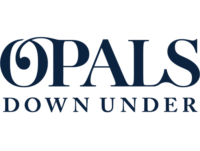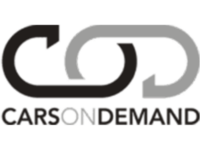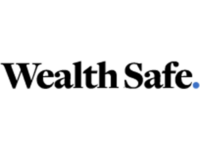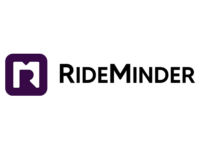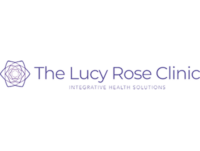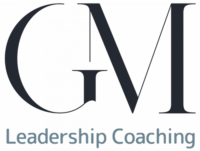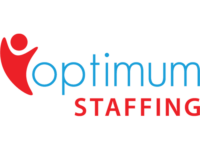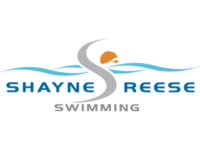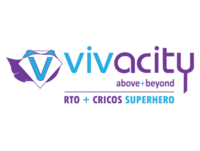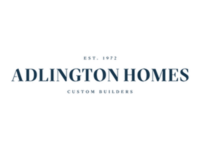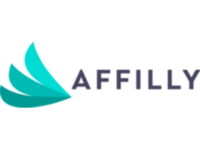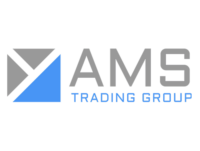How to Build a Facebook Ads Funnel for Lead Generation
By Cameron Roberts – Founder & CEO of Bubblegum Marketing,
Posted On March 29, 2025
In the competitive world of digital marketing, Facebook ads have become a powerful tool for businesses looking to generate leads and grow their customer base. While the platform’s advertising capabilities are robust, the key to unlocking their full potential lies in constructing a meticulously organized funnel. A Facebook ads funnel is a strategic path that leads potential customers through specific steps, starting with initial awareness and moving towards conversion.
In this comprehensive guide, we will delve into the intricacies of creating an effective Facebook ads funnel specifically designed for lead generation.
Understanding the Facebook Ads Funnel
Before embarking on the journey of designing a Facebook ads funnel, it’s imperative to grasp the fundamental concept of what a funnel is and its operational mechanics. A funnel isn’t just a marketing tool; it’s a series of steps designed to lead potential customers from the first stage of awareness to the final goal of conversion.
In the realm of Facebook ads, a funnel is instrumental in reaching unexplored audiences, engaging them with your brand, and transforming them into leads or loyal customers.
The Concept of a Marketing Funnel
The notion of a funnel is anchored in the idea of narrowing down a large audience into a smaller group of qualified leads. The top of the funnel represents a wide array of potential customers who may not yet be familiar with your brand. As prospects move through the funnel, they become more engaged and interested, ultimately resulting in a conversion at the bottom. Understanding this concept is crucial as it helps marketers design strategies that cater to prospects at different stages of their journey.
The Importance of a Structured Approach
A structured approach to building a Facebook ads funnel is vital for several reasons. Firstly, it allows for more targeted communication, ensuring that the right message reaches the right audience at the right time. Secondly, it enables better tracking and analysis of customer behavior, providing invaluable insights for optimization. Lastly, a well-structured funnel enhances customer experience by delivering relevant content that resonates with their needs and preferences, thus increasing the likelihood of conversion.
How Facebook Ads Fit into the Funnel Framework
Facebook ads are uniquely positioned to support every stage of the funnel due to their versatile targeting capabilities and diverse ad formats. Whether it’s creating awareness through visually appealing video ads or driving conversions with persuasive call-to-action buttons, Facebook ads can be tailored to meet the objectives of each funnel stage. This adaptability makes them an indispensable component of any digital marketing strategy focused on lead generation.
Stages of a Facebook Ads Funnel
A typical Facebook ads funnel comprises three primary stages, each with distinct objectives and strategies. Understanding these stages is crucial for designing a funnel that effectively guides prospects toward conversion.
Awareness Stage: Casting a Wide Net
At the awareness stage, the primary goal is to capture the attention of a broad audience who may not yet be acquainted with your brand. This stage is about casting a wide net to build brand awareness and pique the interest of potential customers.
Using Engaging Visual Content
Engaging visual content is key to grabbing attention at this stage. Utilize eye-catching video ads, carousel ads, or high-quality image ads that showcase your brand’s unique selling points. The aim is to create a memorable first impression that encourages further exploration.
Leveraging Audience Insights
Utilize Facebook’s sophisticated audience targeting tools to identify and reach potential customers based on demographics, interests, and behaviors. By leveraging these insights, you can ensure that your ads are seen by those most likely to be interested in your offerings.
Building Brand Recognition
The awareness stage is also about establishing brand recognition. Consistent branding across all your ads helps reinforce your identity and makes your brand more memorable. This consistency builds trust and lays the groundwork for deeper engagement in the subsequent stages.
Consideration Stage: Engaging and Educating
Once you’ve captured your audience’s attention, the consideration stage aims to engage them by providing valuable content and information. This stage is about nurturing interest and encouraging prospects to consider your product or service as a viable solution to their needs.
Delivering Educational Content
Educational content is crucial at this stage. Share informative blog posts, host webinars, or present case studies that address common pain points and showcase your expertise. This content should be designed to answer questions and provide solutions, positioning your brand as a trusted authority in your field.
Encouraging Interaction and Engagement
Encourage interaction by prompting your audience to engage with your content. Use interactive ad formats such as polls or quizzes, and invite users to comment or share their thoughts. This engagement not only fosters a sense of community but also provides valuable feedback that can inform future content strategies.
Highlighting Unique Value Propositions
During the consideration stage, it’s important to highlight what sets your product or service apart from the competition. Clearly communicate your unique value propositions and how they address specific customer needs. This differentiation is key to persuading prospects to move closer to conversion.
Conversion Stage: Driving Action
The conversion stage is the culmination of your funnel, where you encourage potential leads to take a definitive action, such as signing up for a newsletter, filling out a contact form, or making a purchase.
Crafting Persuasive Calls-to-Action
Effective calls-to-action (CTAs) are critical at this stage. Your CTAs should be clear, concise, and compelling, guiding prospects toward the desired action. Use action-oriented language and create a sense of urgency to motivate immediate response.
Implementing Retargeting Strategies
Retargeting is a powerful tool for converting prospects who have shown interest but haven’t yet completed a desired action. Use retargeting ads to remind these individuals of your offerings and encourage them to revisit your website or complete their purchase.
Ensuring a Seamless User Experience
A seamless user experience is essential for driving conversions. Ensure that your landing pages are optimized for speed, mobile-friendly, and aligned with the messaging of your ads. Any friction in the conversion process can deter potential leads, so it’s important to streamline every aspect of the user journey.
Setting Up Your Facebook Ads Funnel
Creating an effective Facebook ads funnel requires strategic planning and execution at each stage. Here’s a step-by-step guide to setting up your funnel for success.
Step 1: Define Your Target Audience
Defining your target audience is the cornerstone of any successful marketing strategy. Knowing who your ideal customers are enables you to tailor your ads to their specific needs and interests.
Utilizing Facebook’s Audience Targeting Tools
Facebook’s audience targeting tools offer a wealth of options for segmenting your audience. Use these tools to create custom audiences based on demographics, interests, behaviors, and even past interactions with your brand. This level of precision ensures that your ads are reaching the most relevant prospects.
Creating Detailed Buyer Personas
Develop detailed buyer personas to gain a deeper understanding of your target audience. These personas should include information about your ideal customer’s age, gender, location, preferences, and challenges. By humanizing your audience, you can craft more personalized and impactful marketing messages.
Constantly Refining Your Audience Profiles
As you gather more data, continuously refine your audience profiles to ensure accuracy and relevance. Use insights from ad performance and customer feedback to adjust your targeting criteria and improve the effectiveness of your campaigns.
Step 2: Create Engaging Content for Each Funnel Stage
Each stage of your funnel requires different types of content to effectively move prospects along their journey. Here’s how to tailor your content strategy for each stage.
Awareness Stage: Capturing Attention with Visuals
In the awareness stage, focus on capturing attention with visually striking content. Utilize video ads, carousel ads, and image ads that are both eye-catching and informative. The goal is to make a strong first impression that encourages further exploration of your brand.
Consideration Stage: Providing Educational Value
During the consideration stage, provide content that educates and informs. Share blog posts, host webinars, or present case studies that address your audience’s pain points and position your brand as a thought leader. This content should be insightful and actionable, helping prospects see the value in your offerings.
Conversion Stage: Driving Action with CTAs
In the conversion stage, your content should be geared toward driving action. Use lead generation ads with strong calls-to-action that prompt users to take the final step, whether it’s filling out a lead form or making a purchase. Ensure that your CTAs are clear, compelling, and aligned with the content of your ads.
Step 3: Set Up Facebook Pixel
The Facebook Pixel is an essential tool for tracking and measuring the success of your Facebook ads funnel. Here’s how to set it up effectively.
Understanding the Role of Facebook Pixel
The Facebook Pixel is a piece of code that you place on your website to collect data on user interactions. It tracks actions such as page views, sign-ups, and purchases, providing valuable insights into how users engage with your site and move through your funnel.
Installing the Facebook Pixel on Your Website
To set up the Facebook Pixel, you’ll need to install it on your website. This process involves adding the Pixel code to your site’s header, which allows it to collect data on user behavior. Facebook provides step-by-step instructions to guide you through the installation process.
Leveraging Pixel Data for Optimization
Once your Pixel is set up, leverage the data it collects to optimize your funnel. Use this information to retarget visitors, refine your audience segments, and adjust your ad strategies based on user behavior. The insights gained from the Pixel are invaluable for making data-driven decisions that enhance your funnel’s performance.
Step 4: Allocate Your Budget Wisely
Effective budget allocation is a critical factor in the success of your Facebook ads funnel. Here’s how to manage your budget for optimal results.
Determining Budget Priorities for Each Stage
Determine how much you’re willing to spend at each stage of your funnel based on your goals and performance metrics. The awareness stage may require a larger budget to reach a broad audience, while the conversion stage should focus on high-intent leads who are more likely to convert.
Adjusting Budgets Based on Performance
Continuously monitor the performance of your ads and adjust your budgets accordingly. If certain ads or stages are performing exceptionally well, consider struggling more funds to maximize their impact. Conversely, reduce spending on struggling ads and explore alternative strategies.
Balancing Long-Term and Short-Term Goals
Strike a balance between long-term and short-term goals when allocating your budget. While immediate conversions are important, investing in brand awareness and consideration can yield significant returns over time. A well-rounded budget strategy ensures sustained growth and lead generation.
Optimizing Your Facebook Ads Funnel
Once your funnel is set up, ongoing optimization is essential for achieving better results. Here are some strategies for optimizing your Facebook ads funnel.
Monitor and Analyze Performance
Regularly monitoring and analyzing the performance of your ads is key to making informed decisions. Here is what you should concentrate on.
Tracking Key Performance Metrics
Track key performance metrics such as click-through rates (CTR), cost per lead (CPL), and conversion rates to gauge the effectiveness of your ads. These metrics provide insights into how well your funnel is performing and where improvements can be made.
Utilizing Facebook Ads Manager Insights
Leverage the insights provided by Facebook Ads Manager to gain a deeper understanding of your campaign’s performance. This tool offers detailed analytics on ad reach, engagement, and conversions, enabling you to identify trends and make data-driven optimizations.
Making Data-Driven Adjustments
Use the data collected from your ads to make strategic adjustments to your funnel. Whether it’s tweaking ad copy, changing targeting criteria, or changing budgets, data-driven decisions are essential for improving your funnel’s overall performance.
A/B Test Your Ads
A/B testing is a crucial component of optimizing your Facebook ads funnel. Here’s how to conduct effective tests.
Experimenting with Ad Variations
Experiment with different ad variations to identify what resonates best with your audience. Test different ad formats, images, headlines, and CTAs to discover the most effective combinations that drive engagement and conversions.
Analyzing Test Results for Insights
Analyze the results of your A/B tests to gain insights into what works and what doesn’t. Look for patterns and trends that indicate successful strategies, and apply these learnings to refine your ad campaigns.
Iterating Based on Test Findings
Use the findings from your A/B tests to iterate and improve your ads continuously. Optimization is an ongoing process, and regular testing ensures that your funnel remains effective and aligned with changing audience preferences.
Retarget Interested Prospects
Retargeting is a powerful technique for converting prospects who have shown interest but haven’t yet taken action. Here’s how to implement retargeting strategies.
Creating Custom Audiences for Retargeting
Create custom audiences to retarget users who have visited your website, engaged with your content, or added items to their cart without completing a purchase. These audiences are already familiar with your brand, making them more likely to convert with the right messaging.
Crafting Personalized Retargeting Ads
Craft personalized retargeting ads that address the specific needs and interests of your audience. Use dynamic ads to showcase products or services that prospects have previously viewed, and include compelling CTAs that encourage them to return and complete their purchase.
Measuring the Impact of Retargeting Campaigns
Measure the impact of your retargeting campaigns by tracking key metrics such as return on ad spend (ROAS) and conversion rates. Analyze the data to identify successful strategies and make adjustments as needed to enhance the effectiveness of your retargeting efforts.
Refine Your Audience Segments
As you gather more data, continuously refine your audience segments to ensure optimal targeting. Here’s how to fine-tune your audience strategy.
Analyzing Audience Insights for Refinement
Analyze audience insights from your Facebook Pixel and Ads Manager to gain a deeper understanding of your high-value customers. Use this information to refine your audience segments and ensure you’re targeting the right people at each funnel stage.
Creating Lookalike Audiences
Leverage the data from your existing customers to create lookalike audiences that resemble your high-value customers. These audiences are more likely to be interested in your offerings, making them ideal targets for your Facebook ads.
Continuously Updating Audience Profiles
As your business evolves, continuously update your audience profiles to reflect changes in customer behavior and preferences. Regularly reviewing and refining your audience strategy ensures that your ads remain relevant and effective.
Conclusion
Building a Facebook ads funnel for lead generation involves careful planning and execution at each stage. By defining your target audience, creating engaging content, and optimizing your strategy, you can guide prospects through a seamless journey from awareness to conversion.
Remember to continuously analyze performance and make necessary adjustments to ensure your funnel remains effective. With a well-structured Facebook ads funnel, you’ll be well on your way to generating high-quality leads and growing your business.
WANT TO BE OUR NEXT SUCCESS STORY?
Book a Free Consult
Schedule a 15-minute Free Consultation via Zoom meetings with our Director, Cam Roberts by clicking the button below now:
Recent Articles
- Omnichannel Funnel Blueprint: Email, Chatbot & CRM Alignment
- Why Single-Channel Marketing Is Dead: Embrace Omnichannel or Get Left Behind
- Voice & Visual Search in 2025: How to Stay Ahead Organically
- Top 7 KEAP Automation Campaigns Every Growing Business Should Implement
- The Concept of Intent-First Funnels for Smarter Conversions
- Automated Funnel Strategies for 2025: What Still Works
- 5 Common Funnel Mistakes That Are Killing Your Conversions
- How AI Is Revolutionising CRM: What Every Marketer Needs to Know
- How Fractional CMO Services from a Marketing Agency Help You Grow Without Full-Time Costs
- How a Fractional CMO Can Transform Your Business Strategy
Request A Quote
Request A Quote for your next Website or Funnel Project below:
